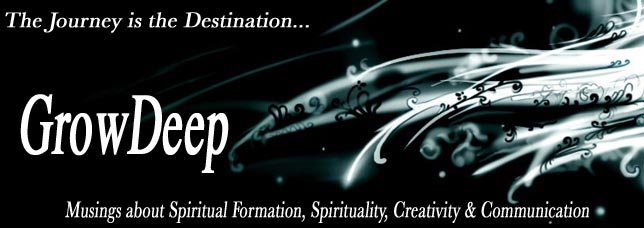
“The fourth living creature was like a flying eagle.” (Revelation 4:7)“The way of an Eagle in the air is too wonderful for me.” (Proverbs 30:18-19)The Gospel of John stands alone from all the other Gospels. As we’ve seen, each of the Gospels presents to us a specific portrait of Jesus, a portrait that is very meticulous and precise. John presents to us nothing less, a meticulous portrait of Jesus. Fascinatingly though, John presents to us dynamics of Jesus that are in nature completely like the other three. Matthew, Mark and Luke are like the television networks of ABC, CBS, and NBC. They are all major networks and all pretty much present the same headlines, just a slightly different way. John on the other hand is like FOX News, seems to have an uncanny ability to find completely different stuff and even the common comes to light, bringing an entirely new perspective. This is John, He presents the same Jesus, but He unearths some things that shed new light on who this Jesus is. To put it another way, if in tracing the emblems assigned to each of the four Gospels, as outlined in the heavenly vision found in Revelation 4:7, there is one emblem that stands unique from the rest. As we’ve seen: Luke – the Man, Mark – the Ox, (as we will see next week) Matthew – the Lion, all of these three (Man, Ox, Lion) are all creatures, which walk on the earth. Then there’s the eagle, which operates on a completely different plain, it flies high above the earth. Just as the eagle soars away to the heavens, looking down at the lands below from a completely different angle gaining a significantly different view, so it is with the Gospel of John.
John is working from a couple of different coloring palettes. On the one hand, he brushes Jesus as Someone who is “not of this world.” As such, His words, teachings, attributes, even insights into people’s past are from One who sees from a higher perspective, from another realm, the realm of the Spirit. At the same time, John is very cognizant of the spiritual climate and worldviews of the people in his present context. This too shapes how he frames what he says about Jesus’ teachings, actions and interactions. Furthermore, John is deeply concerned that we see Jesus as part of God’s meta-narrative, i.e. the ongoing story of God’s dealings with humanity. With great skill, John weaves all three of these palettes together, even from the opening scene of his Gospel.In the beginning… When John begins to tell the story of Jesus, he doesn’t begin with a heavenly announcement delivered by an angelic presence, nor by prophetic declaration by one of Israel’s righteous. John doesn’t even give us a genealogy. When John begins to tell the story of Jesus, he deems only one thing fitting and appropriate, to begin at the very beginning of the story. John takes the mind of his reader all the way back to the beginning of creation. He takes us back to a place in time, even before there was time as we know it. He wants us to see from his very opening sentence, that the account he’s about to bear is part of something big, really big. In the beginning… Just as, Genesis opens by saying, in the beginning God, John opens by saying, in the beginning was the Word, and the Word was with God, and the Word was God (1:1). When the other Gospels writers trace Jesus’ genealogy back to the beginning, John simply says, Jesus is the beginning, in fact before the beginning was – He was. Moreover, Jesus, the Word, was the Substantial force by which “all things were created, and without Him nothing was made that was made” (1:3). Or, as Paul wrote, “By Him all things were created that are in heaven and that are on earth, visible and invisible, whether thrones or dominions or principalities or powers. All things were created through Him and for Him. And He is before all things, and in Him all things are held together.” (Colossians 1:16-17).
John is trying to conjure up something in the mind of the reader, even before he reads about this Jesus. He’s trying to bring up an image in the hearts of the readers, the image of how things were in the beginning. In the beginning God… created the heavens and the earth… the Spirit hovered over the deep… God created man in His image, in His image He created them – male and female… (See Genesis 1-2). At once a reader rooted deep in God’s Story, would see an image of God’s initial design and intention for humanity. The reader would be once again acutely aware of what that must have been like for Adam to walk with God in the cool of the day, to commune with God, to speak with God, to be a living being. But, just at the climax of remembrance of what once was, the reader would be fully aware, in the present, of what things had become - the struggle to know God, the death that entered in as man disobeyed and the implications that have been a part of our journey back to God. The reader would sense the gap, the void, and life without the Spirit living within. For several thousand years, humanity has been yearning to be what humanity used to be, what they were meant to be. And now, God, who could not be found by human initiative alone, has now made Himself known, He’s appeared to humanity, in their very midst, He took on flesh and blood and moved back into the neighborhood. John is wanting his readers to have an “Holy smokes Batman! Do you see what’s going on here!?!?” moment, and without a doubt, the early readers of this text indeed had one of these moments.
Portraits of Jesus Reflect on what it must have been like for the early readers of this Gospel. People who had been long awaiting God to restore to humanity what was lost. To do this, we must first sense what it was like to be with God in the beginning. How did God intend to relate to humanity?
What does the early Genesis account portray of this God-Man relationship?
Once you have a picture of that, think through the ramification of the Fall, the disobedience of humankind. What happened? What was the consequence?
(Spiritual death, lost communion with the Spirit of God, insecurity, potential for emotional wounding, pride, fear, rejection, etc.) Once one becomes readily acquainted with what we have become as a result of the fall of humanity, then and only then can we begin to grow in a sense of yearning for something more, for what was, but now isn’t, to be restored back to its original place. Then, you are at a place to see what John is doing in the opening scene of his Gospel. What was, but is not, has become again, thus we, who have become not, may too become again what we were, but are presently not.
“The Word became flesh and blood, and moved into the neighborhood. We saw the glory with our own eyes, the one-of-a-kind glory, like Father, like Son, Generous inside and out, true from start to finish.” (John 1:14 Message)

No comments:
Post a Comment